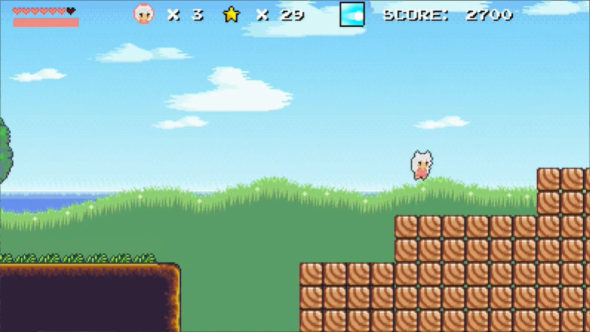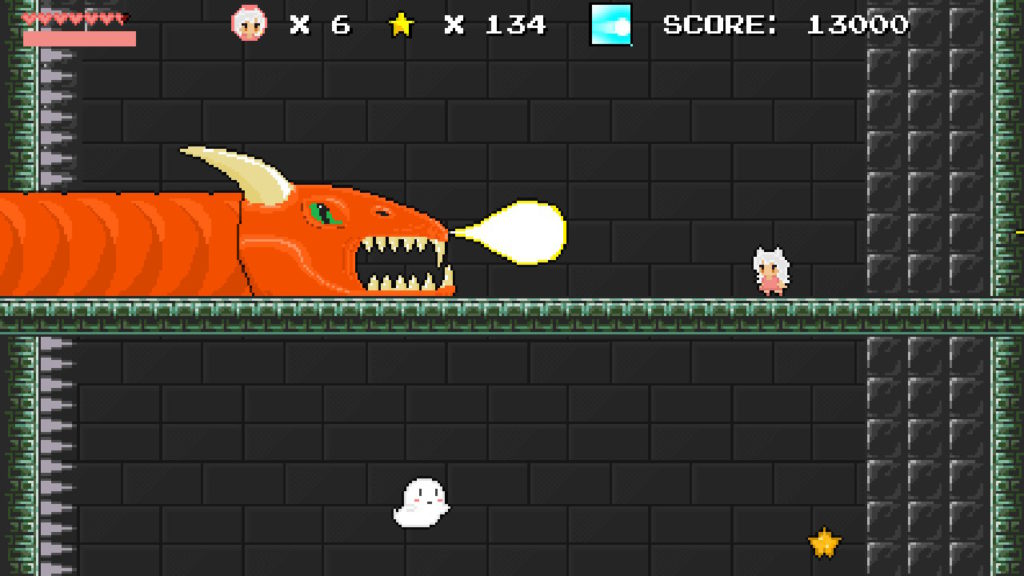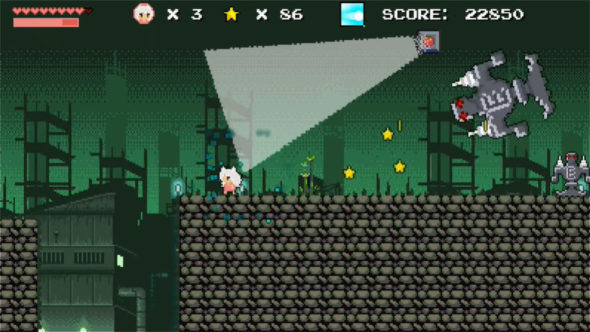
Developer: TERNOX
Publisher: Victory Road
Platform: Steam, Switch
Tested on: Switch
Taimumari Complete Edition – Review
Victory Road and TERNOX bring the complete edition of their retro-styled game Taimumari to the Switch this month. The game has been available on Steam for quite some time but has largely remained under the radar. As it arrives on the Switch, it’s time to take another look at this hardcore platformer.
Story
Just like in the games of yore, the story is presented through huge walls of poorly-written English text. Whether the bad writing was a deliberate style choice isn’t clear but the fact is that it does fit the style of game Taimumari wants to be. The game takes place in a parallel world called Zaria, which is inhabited by the guardians of time and space. At one point in Zaria’s history, an unnamed divine force granted the inhabitants the power to control time. To do so, they had to confine their souls in the magic crystal of time, which is now guarded by the descendants of the original Zarians. When a group of wizards destroys the crystal, in order to claim its power for themselves, bad things start to happen. It’s now up to cat-eared sorceress Himari to defeat each of the wizards and reclaim the pieces of the crystal in order to restore balance to the world.
Graphics
The game alternates between two graphic styles. In the dialogue scenes, there’s beautiful sprite work showing the characters. Unfortunately, despite the quality of the artwork itself, the characters are presented as static cut-outs that don’t change their expression to respond to the mood of the dialogue. Given how the game clearly uses this artwork to market itself, it’s disappointing to see the wasted potential here. It almost feels like a bait and switch, with screenshots and icons in the e-shop focusing on catgirls and sorceresses with ample cleavage, then presenting 8-bit characters throughout most of the game. That said, the artwork presented here in the complete edition is completely reworked from the original version of the game, and the new drawings are miles ahead of the older versions.
Apart from the detailed sprites in the dialogue scenes, everything is presented in a very basic retro style. The graphics suffer from several issues sadly, including screen flickering during scene transitions. Of note here is that the game gives an epilepsy warning when you boot it up, indicating that the developers are aware of the impact of the amount of flashing effects on screen. It’s quite striking to see how much thought and development has gone into the background graphics compared to the rather flat and boring designs on the foreground, especially when it comes to larger characters too.
Sound
Just like the graphics and the overall gameplay that Taimumari attempts to emulate, the sound design is based on NES and SNES-era games. This means very basic and repetitive limited sound design, with no dialogue whatsoever. It works for what it attempts to do but it doesn’t stand out.
Gameplay
Retro platformers are a dime a dozen these days, and Taimumari falls into this category. Apart from the insane difficulty level, the game doesn’t really offer anything new: you jump and dash through various platform-based levels, taking out enemies and fighting bosses as you try to make it to the end. There’s a couple of somewhat interesting level ideas, such as a Flappy Bird inspired level, but overall these are too rare to really make this game stand out from the retro platforming crowd.
Taimumari tries to emulate the feeling of the old school hardcore platformers of the NES and SNES-era. Unfortunately, the game tries too hard to be difficult just for difficulty’s sake and never feels balanced. The levels themselves provide platforming challenges that wouldn’t look out of place next to other classic platformers that make you rage quit, such as Mega Man 2 or Ninja Gaiden. You only get three lives to clear each stage. Some levels have a handful of hidden extra lives, and you can spend your hard-earned in-game currency to buy extra lives as well. However, given the frustrating difficulty of each level, these are only a small help, and you’ll just end up having to memorize each stage as you try to beat it over and over again. This becomes extra infuriating when you lose your final life in one of the game’s boss fights, as you’ll be forced to clear the entire level again from the beginning. A continue feature would’ve been preferable here.
Apart from Himari mode, which is the route you’re forced to play on your first playthrough, there are two other unlockable routes to the game, as well as several difficulty levels, including an unlockable extra hard difficulty. Given the balance issues even at lower difficulties, it appears that this mode is only for those that are feeling extra masochistic.
Conclusion
It’s clear what kind of game Victory Road 64 was trying to make, and for the most part, they accomplished their goal. However, apart from the difficulty, there isn’t anything that really makes the game stand out from the huge amount of retro platformers that are available these days. If you’re into frustratingly difficult platformers, you might find your poison here, but for anyone else, there isn’t a lot of fun to be had here.
Taimumari Complete Edition - Review,









No Comments